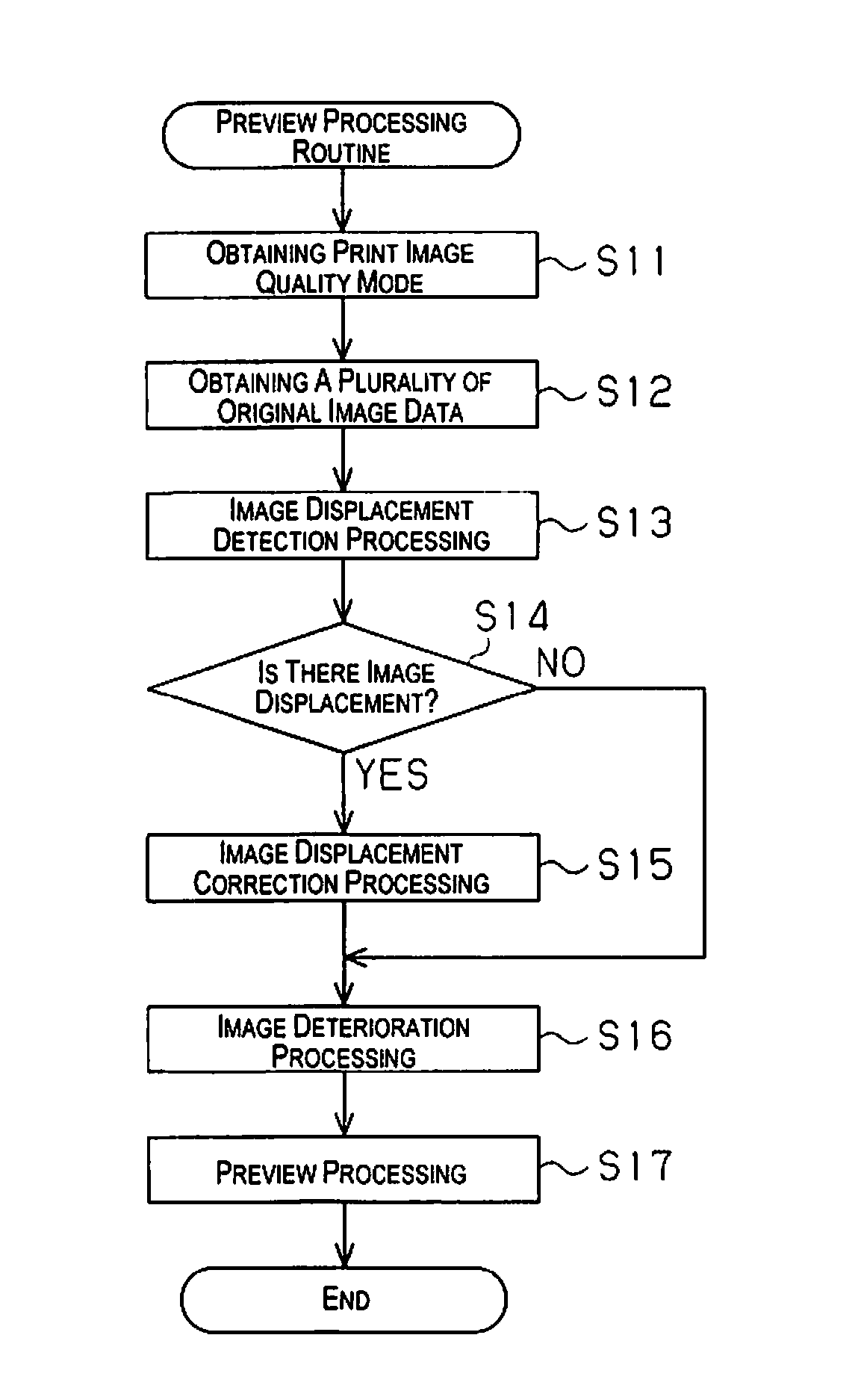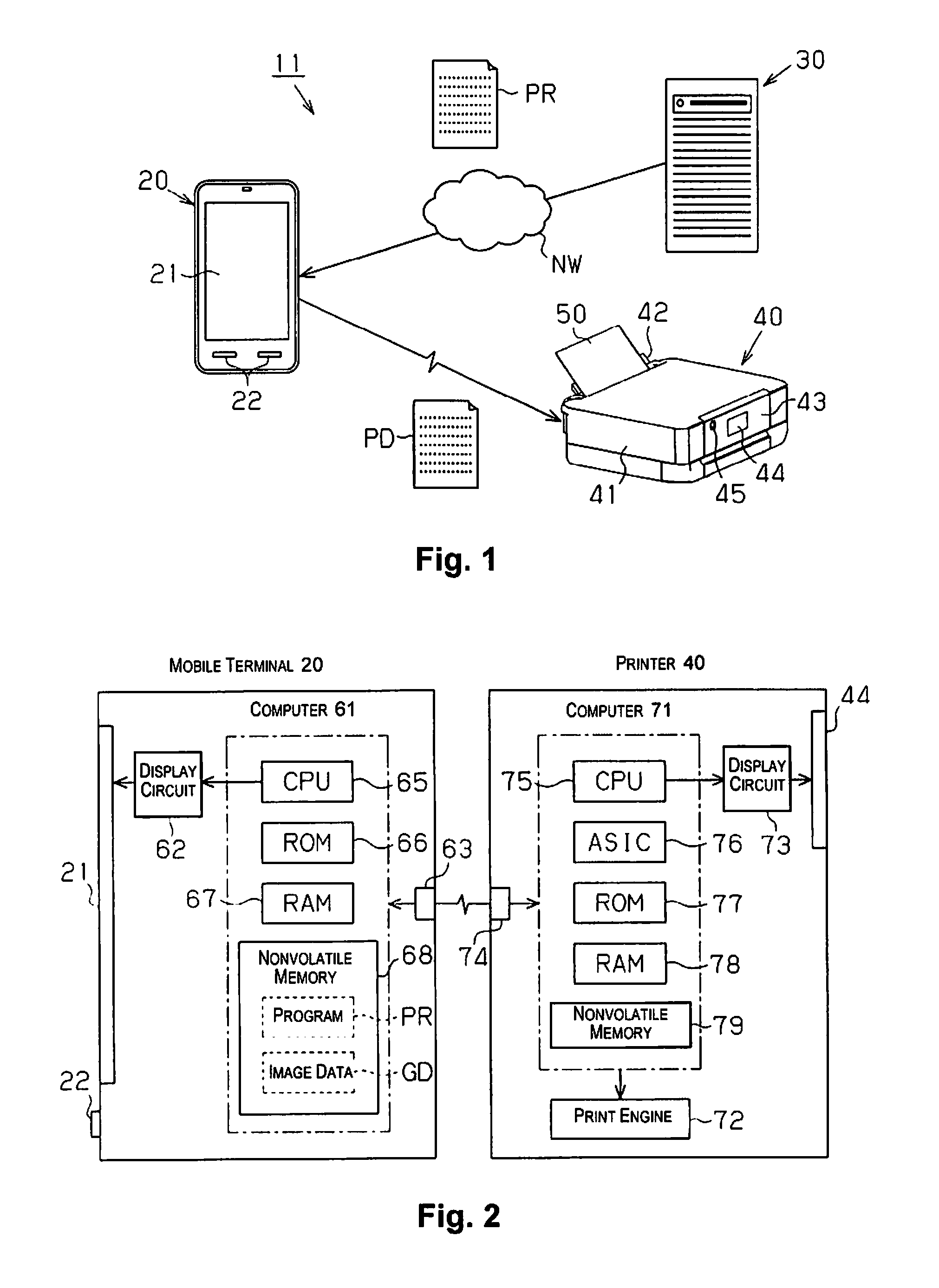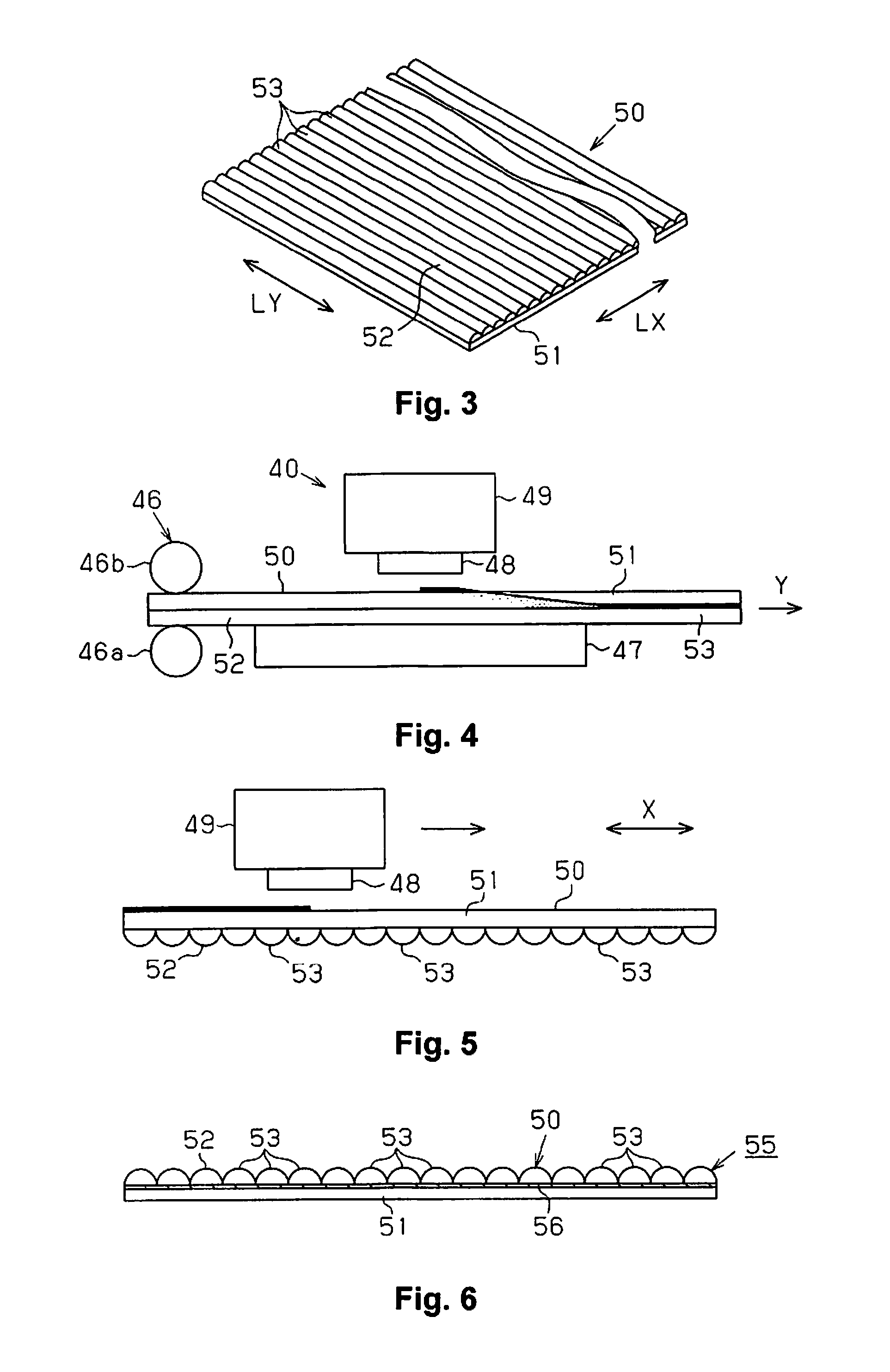Three-dimensional image program and printer
- Summary
- Abstract
- Description
- Claims
- Application Information
AI Technical Summary
Benefits of technology
Problems solved by technology
Method used
Image
Examples
first embodiment
[0064]Hereinafter, one embodiment of programs and a printer will be explained in reference to FIG. 1 to FIG. 11.
[0065]A print system 11 as shown in FIG. 1 is a system that can print a three-dimensional image on a lens sheet. The print system 11 is provided with a mobile terminal 20 that performs operations to instruct a displaying or a printing an image by the user, a server 30 that provides contents aimed at printing of the three-dimensional image to the mobile terminal 20, and a printer 40.
[0066]The plural kinds of contents are stored in the server 30. The user downloads the program PR to the mobile terminal 20 through the interne NW in a charge or free of charge. The program PR downloads a part of the contents with the desired tertiary viewing image data GD.
[0067]The mobile terminal 20 is provided with a display section 21 and an operating section and the screen of the display section 21 is capable of performing touch operations so as to operate various instructions. The display ...
second embodiment
[0135]The second embodiment will be described in reference to FIGS. 12A-C and FIG. 13.
[0136]A three-dimensional image of the present embodiment is a stereoscopic image that is capable of stereoscopically viewing through the lens layer by using disparity of left and right eyes, and has an image for left eye and an image for right eye as a plurality of images configuring the three-dimensional image. To provide the stereoscopic image, for example, the user takes two images having disparity by a camera, and determines whether or not these two images viewed from different angles are appropriate for using as the three-dimensional image.
[0137]As shown in FIG. 12A, the height positions of an object OP1 (object) in an image for left eye LG1 and an object OP2 in an image for right eye RG1 are calculated, and both height positions are compared and a displacement amount ΔL in the height direction (lens longitudinal direction LY) is detected. For example, the computers 61, 71 specify a position ...
PUM
 Login to View More
Login to View More Abstract
Description
Claims
Application Information
 Login to View More
Login to View More - R&D
- Intellectual Property
- Life Sciences
- Materials
- Tech Scout
- Unparalleled Data Quality
- Higher Quality Content
- 60% Fewer Hallucinations
Browse by: Latest US Patents, China's latest patents, Technical Efficacy Thesaurus, Application Domain, Technology Topic, Popular Technical Reports.
© 2025 PatSnap. All rights reserved.Legal|Privacy policy|Modern Slavery Act Transparency Statement|Sitemap|About US| Contact US: help@patsnap.com



